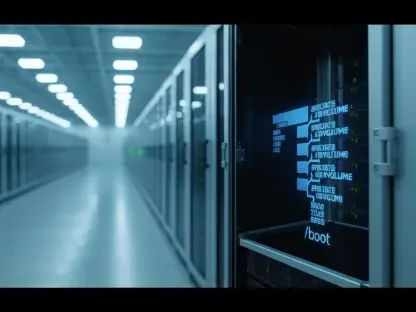In today’s fast-paced technological landscape, optimizing software development processes within complex frameworks has become a paramount concern for modern enterprises. With ever-evolving demands and rapidly advancing tools, developers are often confronted with the difficulties posed by traditional manual instance management. These outdated processes frequently result in inefficiencies, human errors, and heightened security concerns, jeopardizing successful project outcomes. However, the emergence of Multi-Instance Management (MIM) offers a transformative solution, revolutionizing the way organizations streamline their operations and manage their software development lifecycle.
The Challenges of Manual Instance Management
Developers frequently face significant hurdles when managing software instances manually, consuming considerable time and valuable resources in their quest to maintain operational efficiency. This painstaking approach not only delays project delivery but also hinders the development process, causing essential tasks to fall behind schedule. Moreover, human errors often seep into manual administrative procedures, further complicating matters by introducing critical governance and security issues. These mistakes can result in compromised quality checks and insufficient adherence to compliance protocols, intensifying the challenges faced by organizations in demonstrating the business value of innovations like Generative AI (GenAI).
Low-code/no-code (LCNC) platforms, including ServiceNow and Salesforce, have simplified the connection and automation of multiple business workflows, offering a glimmer of hope in a complex environment. Yet, despite these advancements, many organizations still grapple with governance, compliance, and security within their delivery pipelines. The manual management of instances perpetuates operational disruptions and deficiencies that reverberate throughout end-user experiences, often leading to audits, fines, and reputational damage. For regulated industries, the repercussions can be particularly severe, underscoring the urgent need for more effective instance management solutions.
Governance, Compliance, and Security Concerns
In large enterprises, inconsistencies in permissions and unclear governance protocols frequently result in confusion and delays, creating a chaotic landscape that impedes progress. These gaps in authority and accountability pose significant risks, compromising the ability of organizations to maintain stringent compliance and security standards. Poor commitment to compliance further exacerbates these issues, introducing both financial and reputational risks that can significantly impair an enterprise’s standing and operational integrity.
The complexity inherent in sprawling enterprise environments necessitates robust instance management practices that can withstand the pressures of scale and regulation. Effective Multi-Instance Management solutions emerge as a crucial measure, ensuring clear visibility and control over disparate instances. By unifying and streamlining management processes, MIM mitigates the risks associated with security breaches and regulatory non-compliance, implementing a systematic approach that fortifies the defenses of an enterprise. This technology not only alleviates operational slowdowns but also supports the holistic oversight required to navigate intricate governance and compliance landscapes.
Benefits of Multi-Instance Management Solutions
Multi-Instance Management introduces smart technology that unifies siloed instances and employees, ensuring all relevant parties can leverage the benefits of speed and safety in their operations. It centralizes and streamlines management processes, reducing the risks of security breaches and avoiding operational slowdowns. This approach enhances the software development lifecycle by supporting real-time and holistic views of changes occurring within an organization. By maintaining conformity with governance needs and ensuring greater consistency across instances, MIM offers a transformative leap from outdated manual management practices.
Automated, policy-driven Multi-Instance Management solutions are integral in supporting real-time visibility and robust governance needs. These solutions ensure that all migratory processes undergo proper checks, scans, and approvals, reducing the necessity for manual intervention and decreasing administrative overhead. The technology provides an immutable record of changes across instances, enabling ready-made compliance reports and significantly shortening the mean time to resolution during troubleshooting failures. Enterprises adopting MIM experience accelerated business transformation, achieving operational speed without sacrificing safety or performance.
Transforming Enterprise Operations
Enterprises that embrace Multi-Instance Management witness a rapid acceleration in their business transformation efforts, characterized by substantial reductions in manual efforts and administrative overhead. Policy-based deployments play a crucial role here, ensuring that every migration is subjected to appropriate checks, scans, and approvals. This meticulous scrutiny provides an immutable record of changes, greatly simplifying compliance reporting and facilitating more efficient troubleshooting during failures. Consequently, organizations can shorten the mean time to resolution, enabling a smoother and more productive development cycle.
Enhanced control and visibility afforded by Multi-Instance Management empower tech leaders to manage operations centrally, reinvesting freed-up resources into growth initiatives. The comprehensive real-time oversight provided by MIM solutions ensures consistency and compliance across instances, driving enterprises towards a more dynamic and resilient development cycle. This technological shift away from manual intervention not only mitigates risks and administrative overhead but also supports rapid and secure project delivery, meeting the complex requirements of modern enterprises.
Real-World Applications and Insights
Scott Willson, head of product at Xtype, advocates for the transformative capabilities of Multi-Instance Management in navigating contemporary digital environments. As enterprises leverage these innovative solutions, they position themselves to maintain consistent, secure operations while fostering continual innovation and development. This strategic integration of MIM supports rapid and secure project delivery, seamlessly aligning with the complex demands of modern enterprises.
By replacing outdated manual management practices, Multi-Instance Management facilitates streamlined workflows that boost efficiency and compliance. It unifies disparate processes and resources, ensuring speed and safety in software development. Enterprises adopting these solutions benefit from enhanced control, visibility, and governance, maintaining operations in a more resilient and dynamic manner. The actionable insights provided by MIM allow organizations to troubleshoot proactively, address issues with precision, and continue driving growth and innovation.
Future Outlook and Strategic Importance
In today’s rapidly advancing technological world, improving software development processes within intricate frameworks has become a top priority for modern businesses. With constantly changing demands and swiftly evolving tools, developers often face the challenges posed by traditional manual instance management. These old-fashioned practices frequently lead to inefficiencies, human errors, and increased security risks, which can compromise the success of projects. However, the rise of Multi-Instance Management (MIM) provides a game-changing solution. By adopting MIM, organizations can significantly enhance their operational efficiency and better manage their software development lifecycle. This innovative approach allows companies to automate and streamline various aspects of their development processes, reducing the likelihood of errors and enhancing security. Consequently, businesses can achieve more reliable outcomes and keep pace with the quick evolution of tech and its ever-growing demands.









